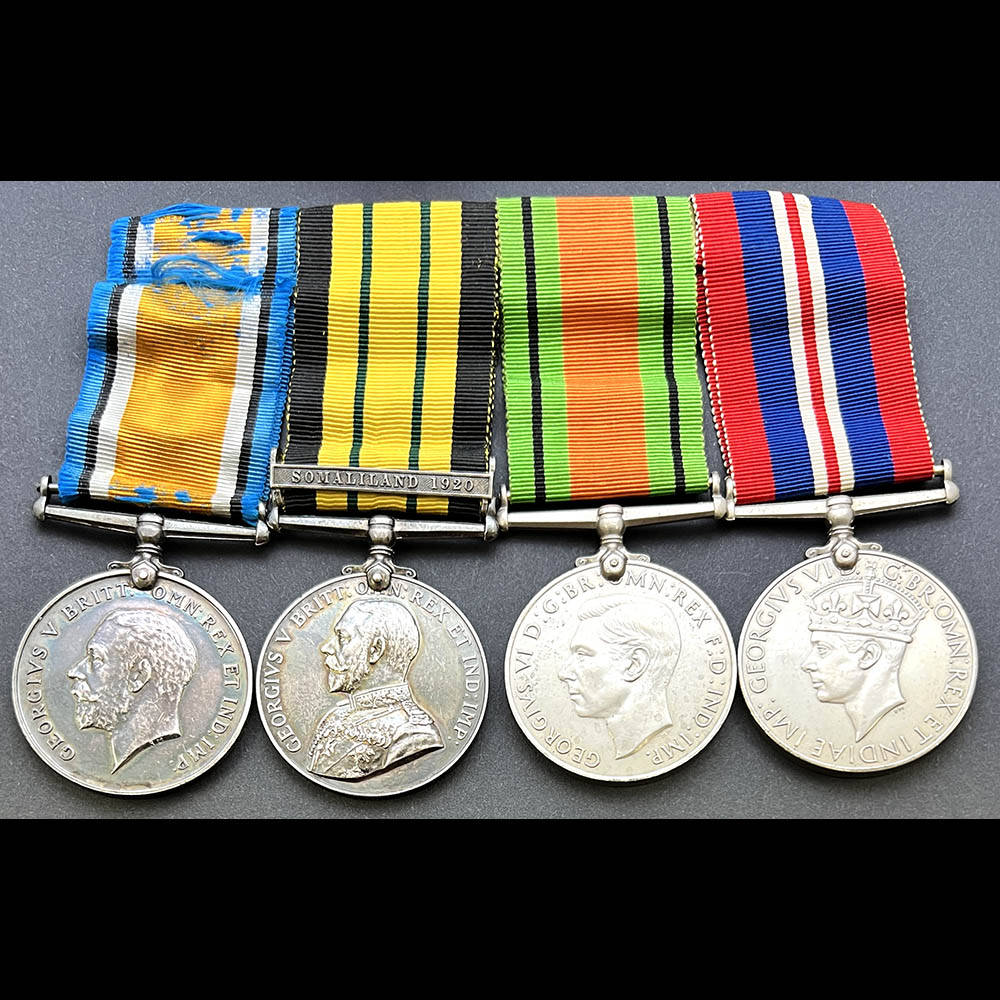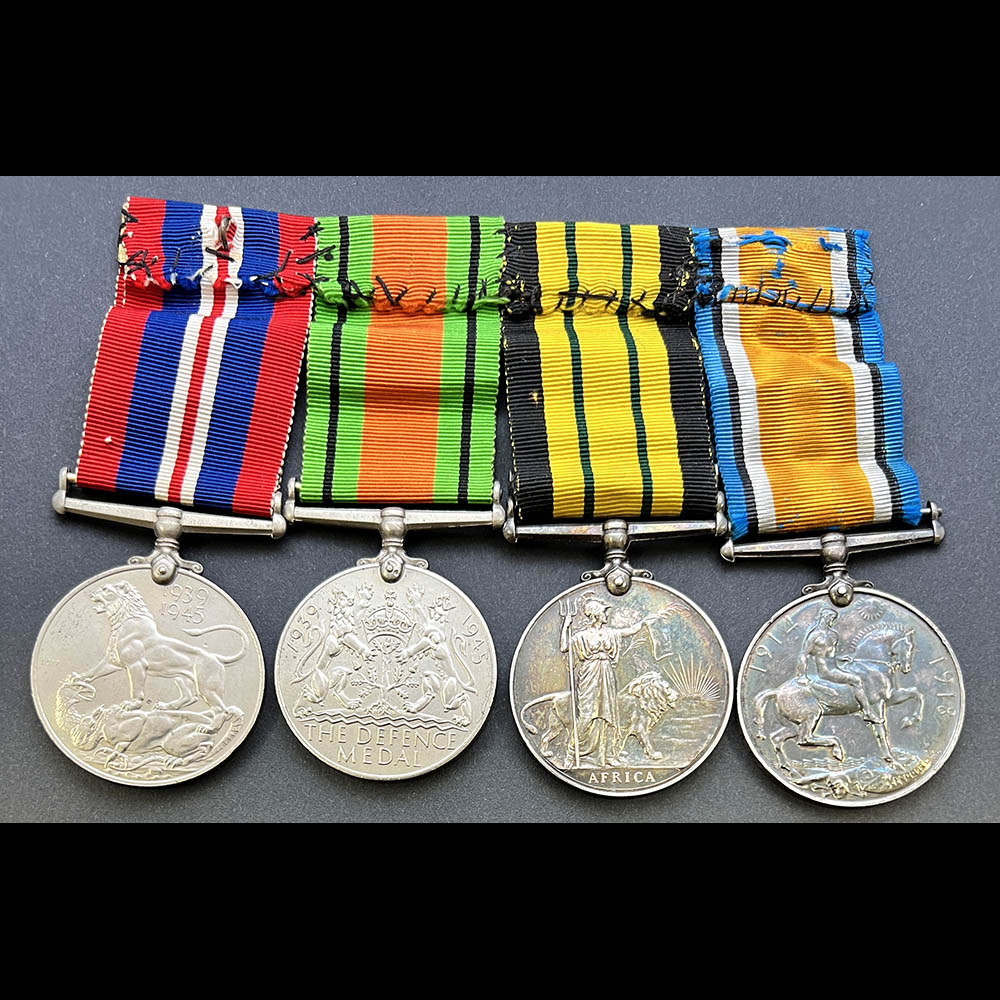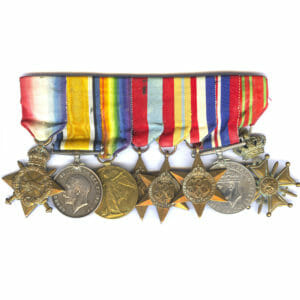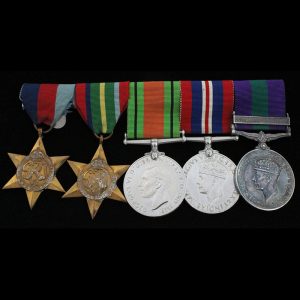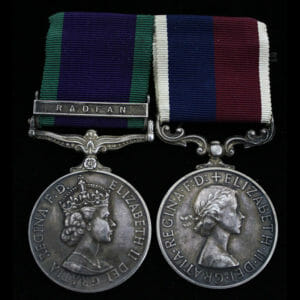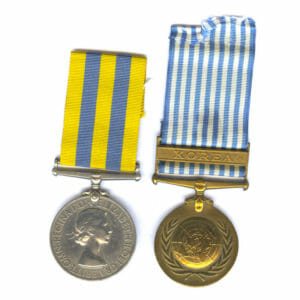Description
BWM, Africa General Service Medal, GV, bar Somaliland 1920, WW2 Defence and War Medal, Walter Henry Kettley, Royal Air Force, formerly RNVR.
Swing mounted as worn on original ribbons, slight fraying to BWM ribbon due to age.
BWM Officially impressed: “R-6882 W.H. Kettley. A.B. R.N.V.R.” Confirmed as only entitlement for WW1.
AGS Officially impressed: “340154 A.C.2. W.H. Kettley. R.A.F.” Confirmed as entitled to this rare clasp.
With copy service papers for both RNVR service from 1918-9, and detailed RAF Service Records for his further service in Egypt.
A young Kettley, became one of only 222 RAF Officers and Men of “Z” Unit, Royal Air Force, to take part in the newly sanctioned Military Operations to finally put the “Mad Mullah” out of action in Somaliland 1920.
One of 222 clasps issued, comprised of about 36 officers and 189 other ranks, extremely rare and the rarest of all campaign clasps issued to the Royal Air Force, with slightly less issued than even the rare “Waziristan 1925” clasp the India General Service Medal, with about 250 issued.
Walter Henry Kettley was born in North Town, Aldershot, on 17th September 1900. His father Charles was stationed in Aldershot as a Foreman of the Army Ordnance Department, he and his wife Alice came from Wiltshire.
Being much too young to fight in the ongoing war, he had to wait until he became of age to join the fight.
Exactly as he was turning 18, he attested for service with the Royal Naval Volunteer Reserve as a Motor Driver on 9th September 1918.
He saw some service at Home with the 2nd Reserve Battalion, Royal Naval Division stationed locally at Aldershot.
Rated as Able Seaman on 28th March 1919, he was demobilised on 4th June 1919.
Just after the war job prospects were not looking good for veterans returning back to civilian life, soon after his discharge he attested with the Royal Air Force on 13th September 1919 again seeing service as a Motor Driver (Petrol) joining RAF Hendon on 14th September 1919.
Soon after he was dispatched overseas, to the Depot in the Middle East on 13th November 1919.
He joined 56 Squadron who were shipped over for service in the Somaliland 1920 campaign, shown on board HMS Ark Royal from 20th December 1919.
He served in the field in Egypt from January to 9th February 1920, when the war against the “Mad Mullah” was finally concluded after many years and wars. Sayid Mohamed Abdullahi Hassan, died later that year of influenza whilst trying to amass a new force after being defeated and driven away by the British during the campaign.
After the campaign he had been promoted to Aircraftsman 1st Class on 1st January 1921 and was discharged as Acting Corporal on 1st May 1921.
During January 1926, he married Edith May Carvey (1897-1982) in Stoneham, Hampshire.
From his Defence and War Medal, it appears that, now in his 40s by the time of WW2 he saw some service at Home, likely with the Home Guard.
Walter lived a long life and later died at the age of 78, during 1978 in Surrey.
He is noted on the Electoral Registers in Surrey since 1926, so seems to have settled back there after his discharge.
The “Z” Force in Egypt consisted of the following:
12 Airco DH 9A Aircraft, shipped with the men on the Royal Navy Aircraft Carrier HMS Ark Royal, used for aerial bombing, one becoming an air ambulance.
A Vehicle Fleet consisting of 10 Ford Trucks, 2 Ford Ambulances, 6 Trailers, 2 Motorcycles and 2 Crossley Motors Light Trucks.
The 36 Officers and 183 Men of the RAF, including their Z Force Commander, Group Captain Robert Gordon, and his Chief of Staff, Wing Commander Frederick Bowhill.
Attached to them from the local forces was the Somaliland Camel Corps, permanently based in the region as the local Gendarmerie.
As well as 1 Battalion of the King’s African Rifles.
As a trained Motor Driver, he must have been active in driving one of the above Motor Vehicles deployed during the campaign.
